Suman Shakya wants me to touch the concrete wall of her bedroom, where her one-year-old son lies soaked with sweat. It burns my hand as if it were a hot pan. “Now imagine sitting in front of a hot pan in this weather for as long as it takes to make rotis for the whole family,” she says.
Outside the temperature is 44°C (111°F). My throat is dry and my head spins. Sweat pours down my face, getting into my eyes and blurring my vision.
Shakya lives in the farming village of Nagla Tulai in the north Indian state of Uttar Pradesh, where lately the heat has been punishingly cruel. Villagers here have always had to endure hot summers, but the past few years have tested their strength.
Divya, 20, prepares a meal at her home.SAUMYA KHANDELWAL
This year, after the end of a harsh winter, the temperature has been rising since March. In mid-May it hit 49 °C (120 °F), the highest India has recorded in 122 years. Since May, local news reports have attributed more than 50 deaths to the record-breaking heat.
At the end of April, when the daytime temperature crossed 45 °C (113 °F), most residents of Nagla Tulai sought success in the hot winds blowing outdoors. Since northwest India first began to see alarming temperatures, local governments have been advising people not to go out in the sun if they can help it. But Nagla Tulai is one of the few Indian villages yet to be electrified. That means no fans, no coolers, and no air conditioners for its 150-odd households.
Instead, the women of Nagla Tulai have taken their cooking to the rooftops. There they sit for hours stuffing tinder into their clay stoves to keep them burning even as the sun breathes fire at them from above. “You can’t even flick the sweat off your face; it will wet your hands and spoil the rotis,” says Shakya.
cause and effect
That climate change is exacerbating South Asia’s heat waves is no longer in question. This year alone, two new studies have explored the links. A report by World Weather Attribution found that the likelihood of a heat wave like this year’s has increased by 30 times since the 19th century. And an attribution study carried out by the UK’s Met Office pointed out that the chances of unprecedented heat waves in India and Pakistan have been made 100 times higher by climate change. The question to be answered next is how people faced with life-threatening heat are going to cope with it.
“Almost everybody is affected; only the extent varies,” says Vimal Mishra, a climate scientist at the Indian Institute of Technology Gandhinagar in the western state of Gujarat. “People who are less affected [than the others] are those who can afford air conditioning.” The National Disaster Management Authority counts 23 out of India’s 28 states as being vulnerable to heat waves.
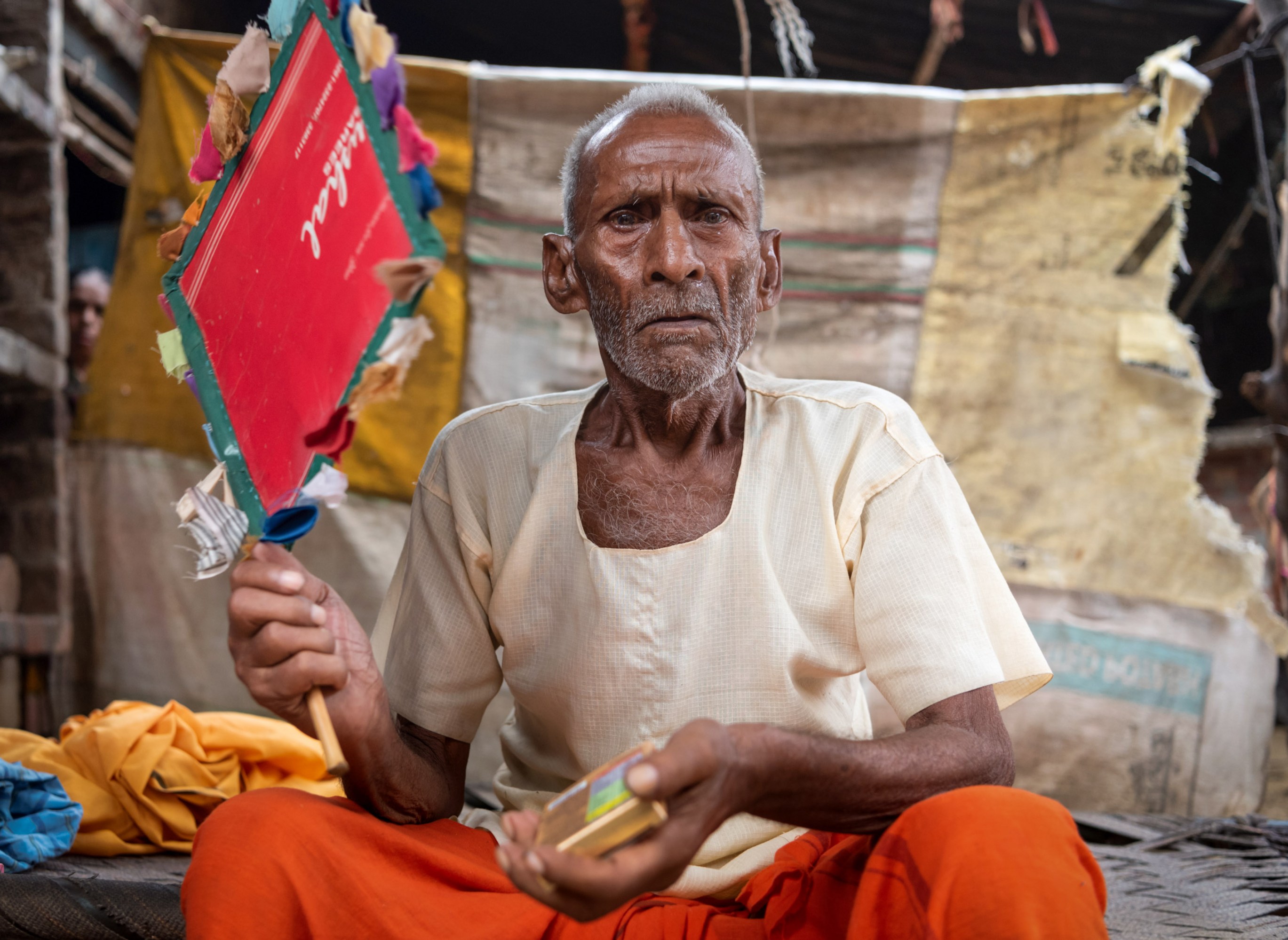 Raja Ram, 97, fans himself with a handmade fan at his home in Nagla Tulai.SAUMYA KHANDELWAL
Raja Ram, 97, fans himself with a handmade fan at his home in Nagla Tulai.SAUMYA KHANDELWAL
Indeed, the sale of air conditioners has shot up in India since March, especially in urban areas. In Etah, the nearest city to Nagla Tulai, the hum of ACs drowned out all other noise every time electricity came on.
“The majority of houses run AC units in this town,” says Devesh Singh, a television journalist who has been filing reports on Etah’s summers for 22 years. Many households in the city steal the necessary electricity from state-owned power companies to avoid paying the steep bills. They do it by attaching an aluminum hook, called a katia, to the power cables running through the streets.
In cities across Uttar Pradesh, police carried out daily raids this spring to spot the contraptions. “Earlier, raids happened during the day, which allowed people to use the electricity at night and remove their katia first thing in the morning. This year, the police have been coming between 2 am and 4 am, while people are asleep in front of their ACs,” says Singh, the journalist. By mid-June, 150 people in Etah had been charged with power theft, but the ACs kept on humming.
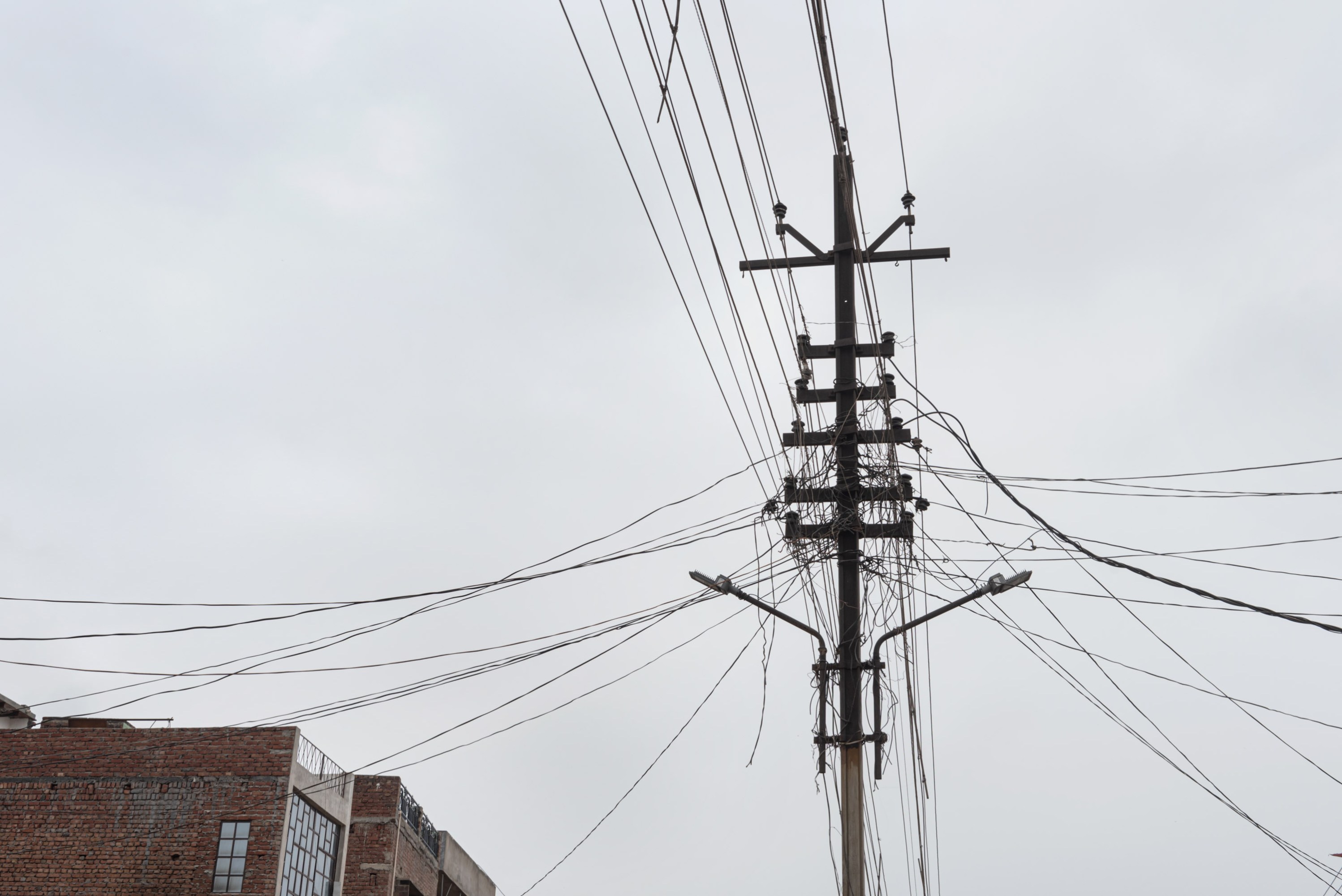 Electricity poles are photographed in Etah, India. A lot of people steal electricity by attaching wires to the poles at night.
Electricity poles are photographed in Etah, India. A lot of people steal electricity by attaching wires to the poles at night.
Even with the use of air conditioners hitting a record high, a vast majority of Indians still can’t afford one. The country’s annual per capita income is around 9,000 rupees, and even a cheap AC would claim a quarter of that. And even if you have an AC unit and the electricity to run it, whether paid for or stolen, that doesn’t guarantee escape from the heat. Power cuts are common during the summer; they are brief in big cities but more frequent and longer-lasting in towns and villages. This year, a severe shortage of coal at the power stations and an enormous demand for electricity meant huge numbers of people had to make do with four hours or less of power per day in some of the worst-hit states.
Who gets to stay cool
Caste, gender, and regional location can also affect who gets to stay cool. India’s climate researchers are increasingly concerned about such factors. “Your starting point really determines the kind of capacity you will have to deal with climatic risks,” says Chandni Singh, a researcher at the Indian Institute for Human Settlements who has been working on climate change vulnerability and adaptation for 10 years. “There is a huge disparity between villages and within villages.”
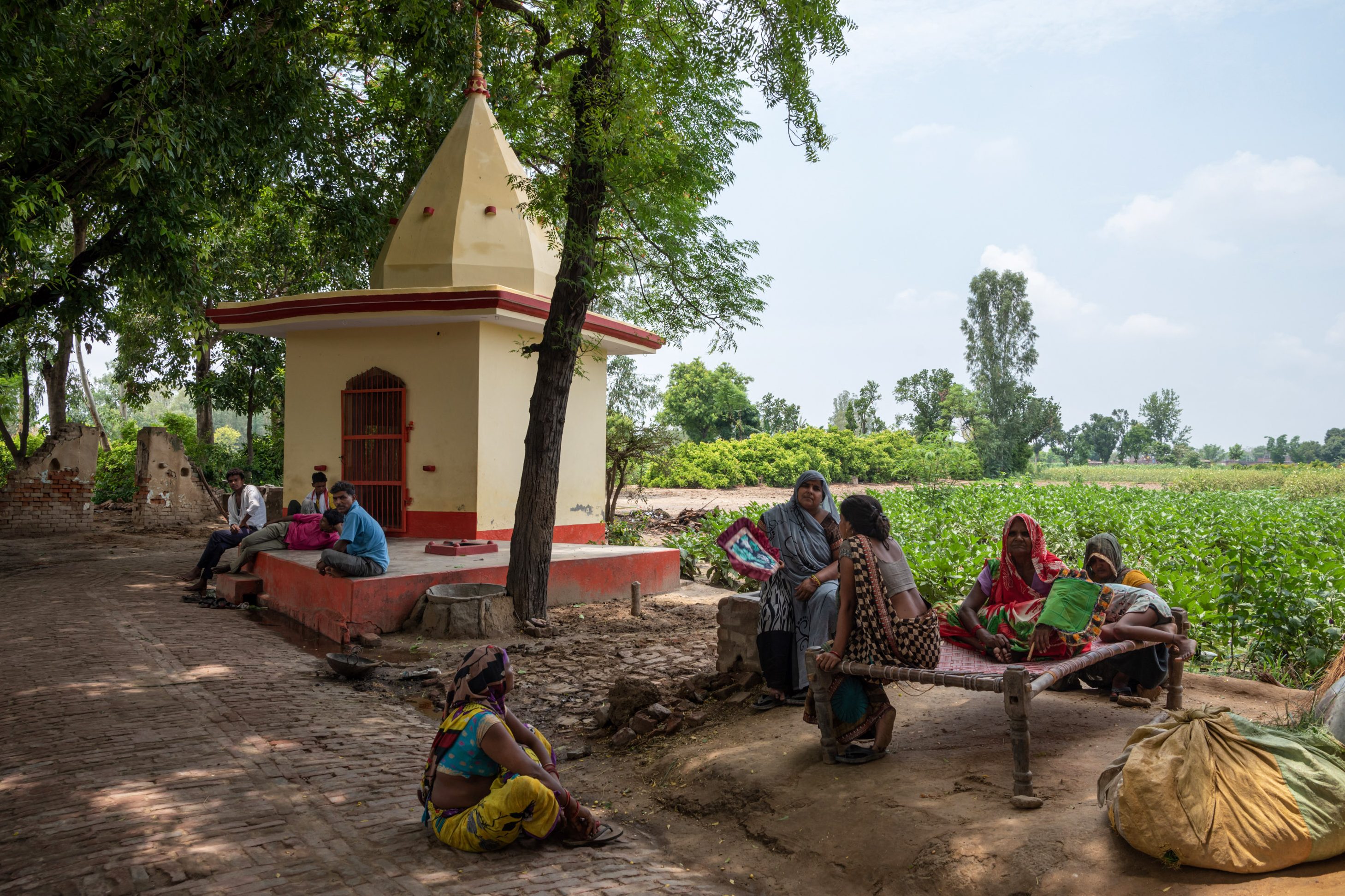 People sit under a banyan tree by the temple to escape the heat.
People sit under a banyan tree by the temple to escape the heat.
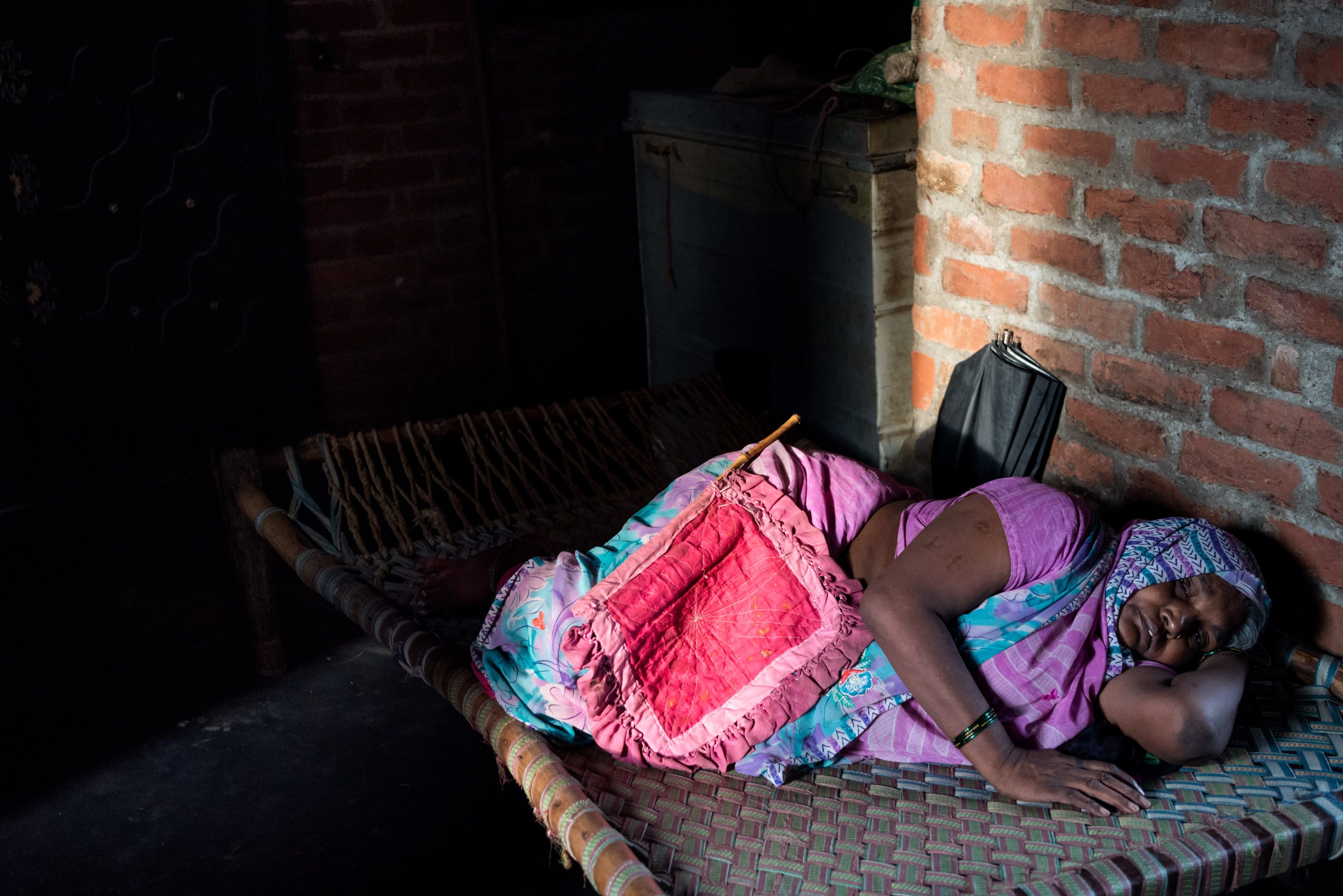 A woman lies with a handmade fan
A woman lies with a handmade fan
For example, in Nagla Tulai, men and old women can seek a breeze outdoors when they like, but other women and girls are expected to spend the daytime hours indoors, where the still and stifling heat presses down on them like a blanket. To the experts, this scarcely counts as adaptation.
“It would be wrong to say that people adapt in these situations. They suffer, basically,” says Mishra. “Meaningful adaptation should reduce the suffering, but that’s not happening when people are trapped in concrete housing with no electricity.”
The men spend most of their time sitting under a big banyan tree and try to ignore the sharp heat encircling them like a halo. To work, they would have to go to the farms, and that would be murdered. The summers have been hot for as long as they remember, so they traditionally rested when the sun was at its peak and worked the rest of the day. Over the past few years, however, their work time has been growing shorter.
“This year, we have been able to work no more than two hours in a day,” Raja Ram, a third-generation farmer, tells me. “The rest of the time, we sit.”
Less work means more deprivation. Even in the years when they worked full time farming tobacco and corn, they had to split the income with the landlords who owned the fields. Most people in Nagla Tulai identify themselves as Shakya, which the government of Uttar Pradesh categorizes as a “backward” caste. That they don’t own the land they farm is one of many inequalities they have faced for generations. Now, the heat waves are making their share of the harvest even smaller.
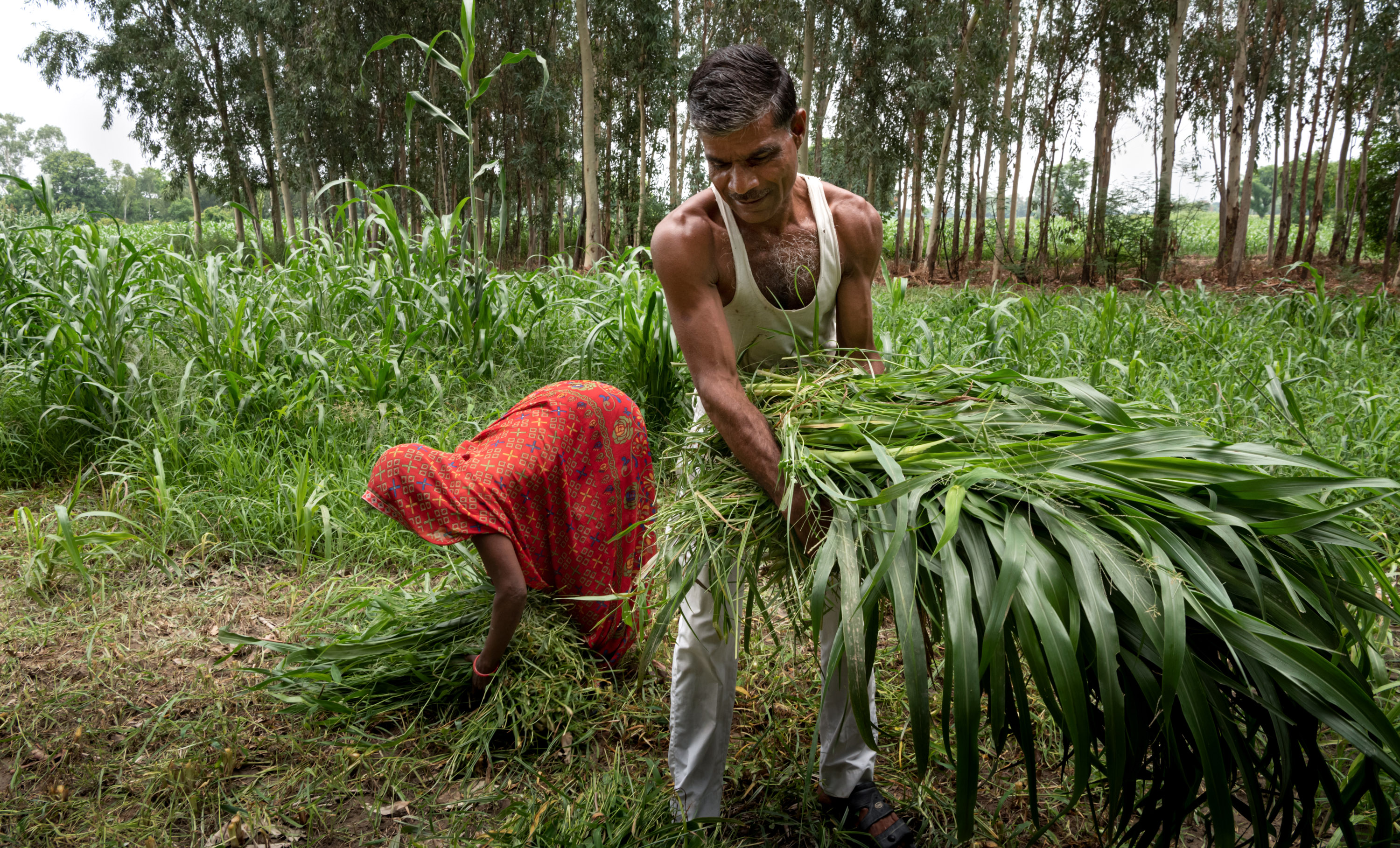 SAUMYA KHANDELWAL
SAUMYA KHANDELWAL
“One thing that is not spoken about much is the impact of landlessness,” says Chandni Singh. “We are talking about people who are already used to shifting their working time in the summer to earlier in the day, even without climate change. But how much further back can you shift that? When you have villages that are seeing such extreme heat even as the monsoon is delayed and water tables are going down, agriculture becomes almost unviable as a livelihood. Where does a youngster go in the village? You are pushing people against the limit of adaptation. You are pushing people to migrate.”
The men in Nagla Tulai don’t want to leave—not yet. They are not so sure about the future, though. If the heat waves cause large-scale migration in India, researchers believe it will be driven by the lasting damage to the agriculture sector.
“Migration in India is mostly driven by employment. If these heat waves occur more often and start early, like this year, the farm laborers will have to move to cities. They will have to find non-farm employment—whatever allows them to earn money,” says Mishra.
Men fear that if they are forced to migrate, a job at a factory or a construction site will not pay enough for them to be able to take their families along. But if the heat waves intensify—on several days, Etah recorded temperatures five degrees higher than the same date the previous year—they might struggle to build a family in the first place. As it is, not many women are willing to marry men from Nagla Tulai. Those who do cope by retreating to their parents’ home for several months every year.
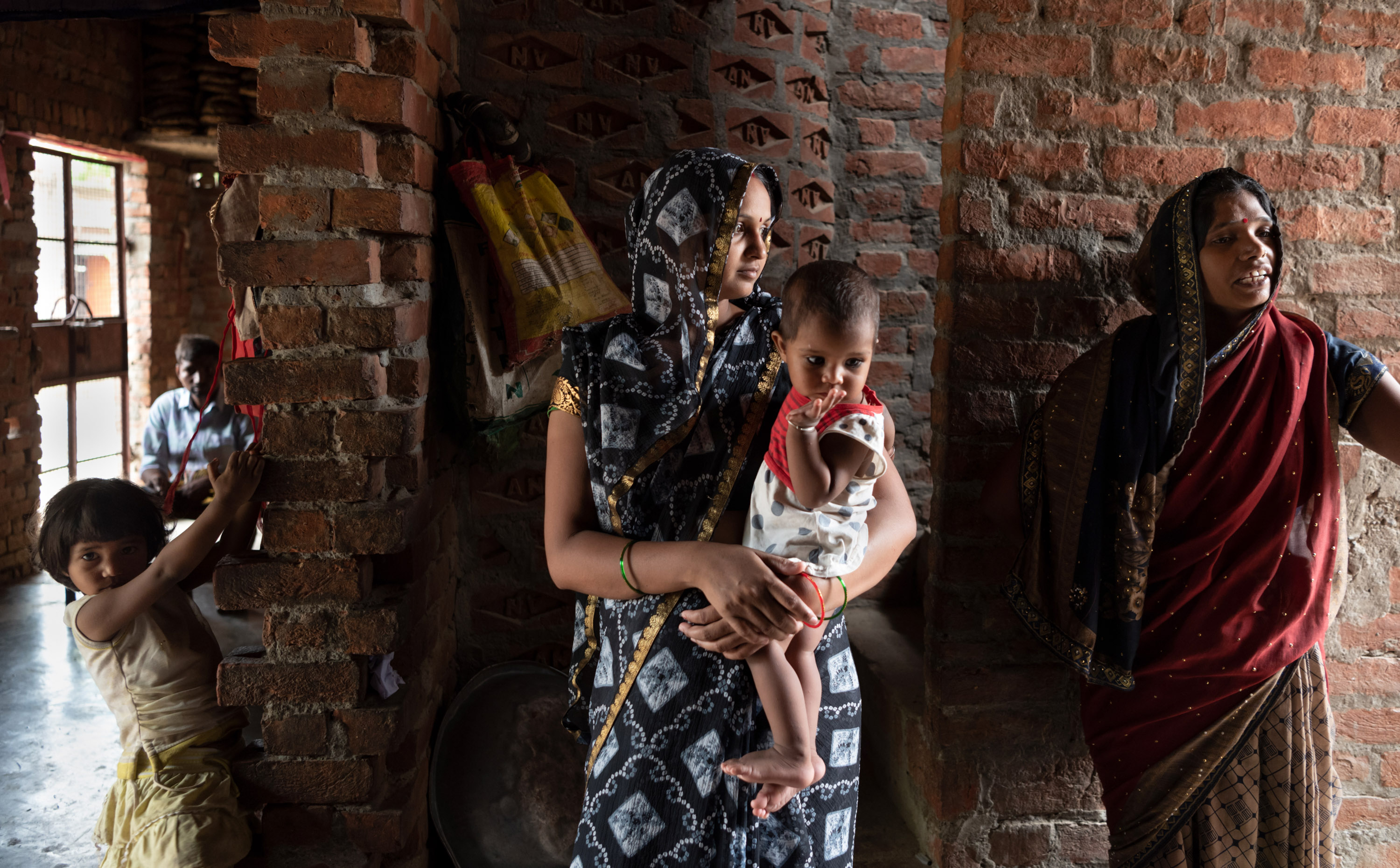 Suman Shakya, a mother of two, holds her child at their home.SAUMYA KHANDELWAL
Suman Shakya, a mother of two, holds her child at their home.SAUMYA KHANDELWAL
Suman Shakya is upset because her husband has refused to drop her at her parents’ village this summer. She fears her children won’t survive the summer without a ceiling fan or AC. “They keep crying all day and all night. One day it’s rashes, the next day it’s an upset stomach, the day after it’s dengue. I feel stuck in a pattern: they fall sick, we take them to the hospital, they fall sick again,” she tells me, waving a cloth fan to comfort her son.
When her mother got married, she took a handmade fan to her in-laws’ house as part of her trousseau. The summers were hot but not lethal, and a solid hand fan easily remedied a power cut in the afternoon. Girls looking forward to marriage crafted the fans themselves, embroidering their names inside the folds. In 2016, when she got married herself, what she wanted for her dowry was an AC and a refrigerator. She arrived in Nagla Tulai with neither. “There would have been no point,” she says.
In 2011, the local government installed solar panels on every rooftop in the village. The residents were told that once they were fully charged, the panels would power bulbs and fans and even charge mobile phones. Later they found out they would need inverters to store the electricity and batteries to charge the inverters, and those things would cost money. “The families that can afford it run three fans on solar, one to cool their buffalo,” says Priyanka Shakya, a 16-year-old girl. Even when fully charged, the solar panels support a fan for only a few hours, so they are saved for the nights, to be turned on when the children start crying.
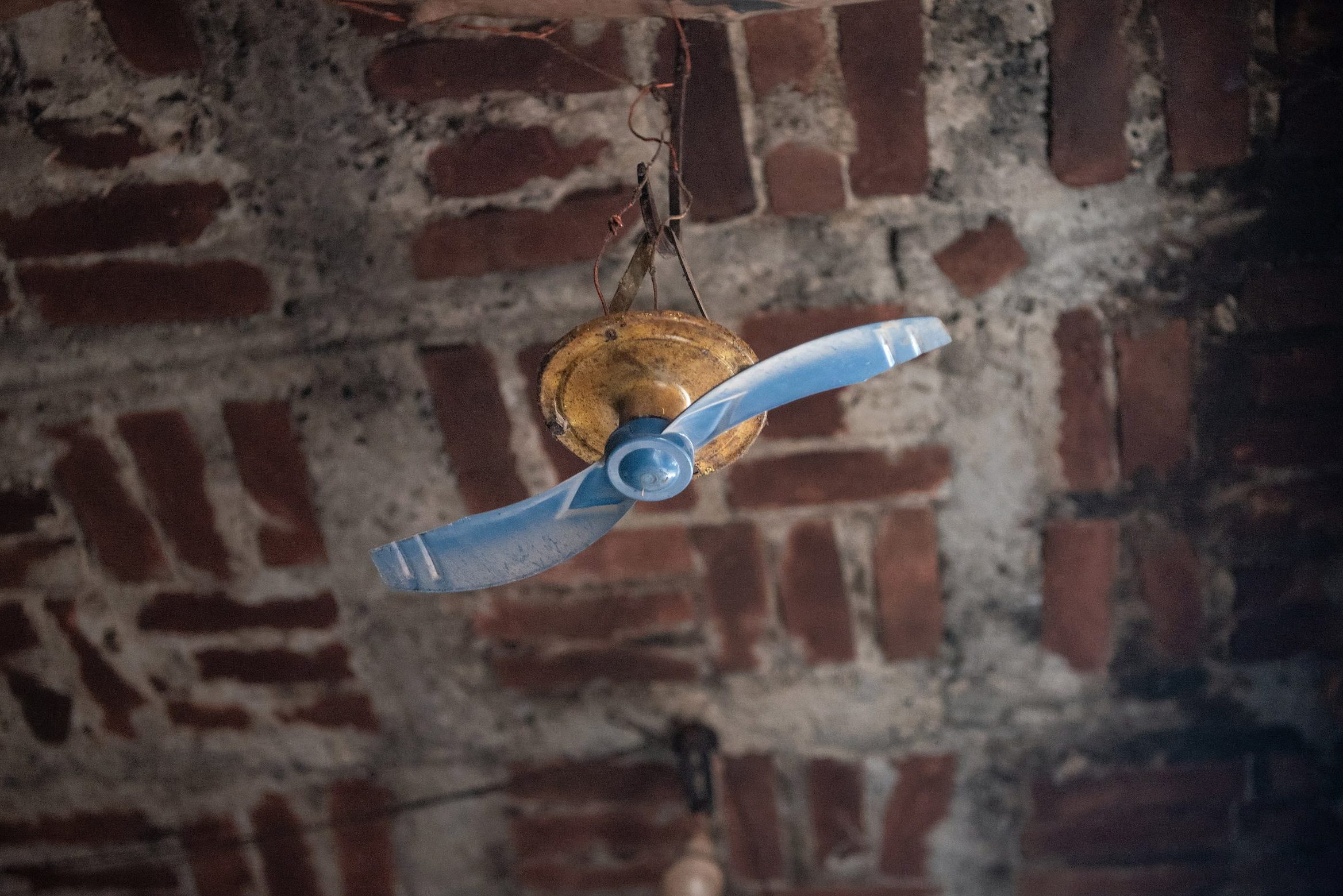 A small ceiling fan stirs the warm air, left, and solar panels across the roofs, right
A small ceiling fan stirs the warm air, left, and solar panels across the roofs, right
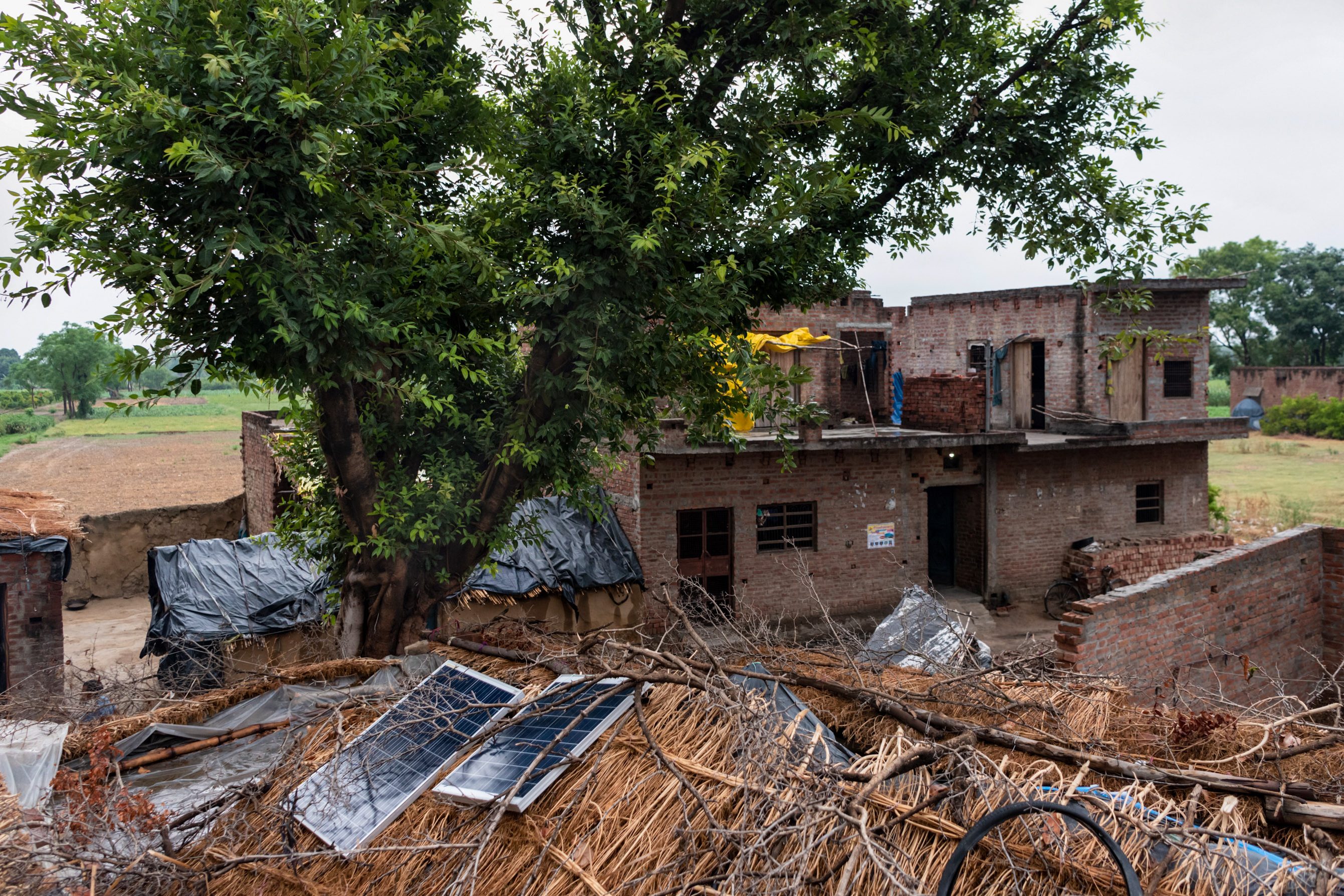
A fan which runs for a couple of hours with solar panels, is unused because the sky was overcast and the panels could not charge.
Administrators in India limit themselves to advance warnings before a heat wave and emergency measures in the middle of one. Those measures may include shutting down schools and construction sites and canceling doctors’ leaves.
Mishra thinks they could do more. “They can identify vulnerable areas, such as villages and slums, where poor people who don’t have air conditioning live,” he says. “Community centers can be set up, such as we have for floods and other disasters, for people to go and get some cooling. They can have cold water. They can have first aid to treat heatstroke-related symptoms.” Even affluent urban neighborhoods need similar shelters for vendors and construction workers who lack protection from the heat, he adds.
In Ahmedabad, where he works, the municipal corporation offers many of these initiatives as part of its heat action plan, the first in South Asia. They put it in place after a heat wave in 2010 claimed 4,462 lives in the city.
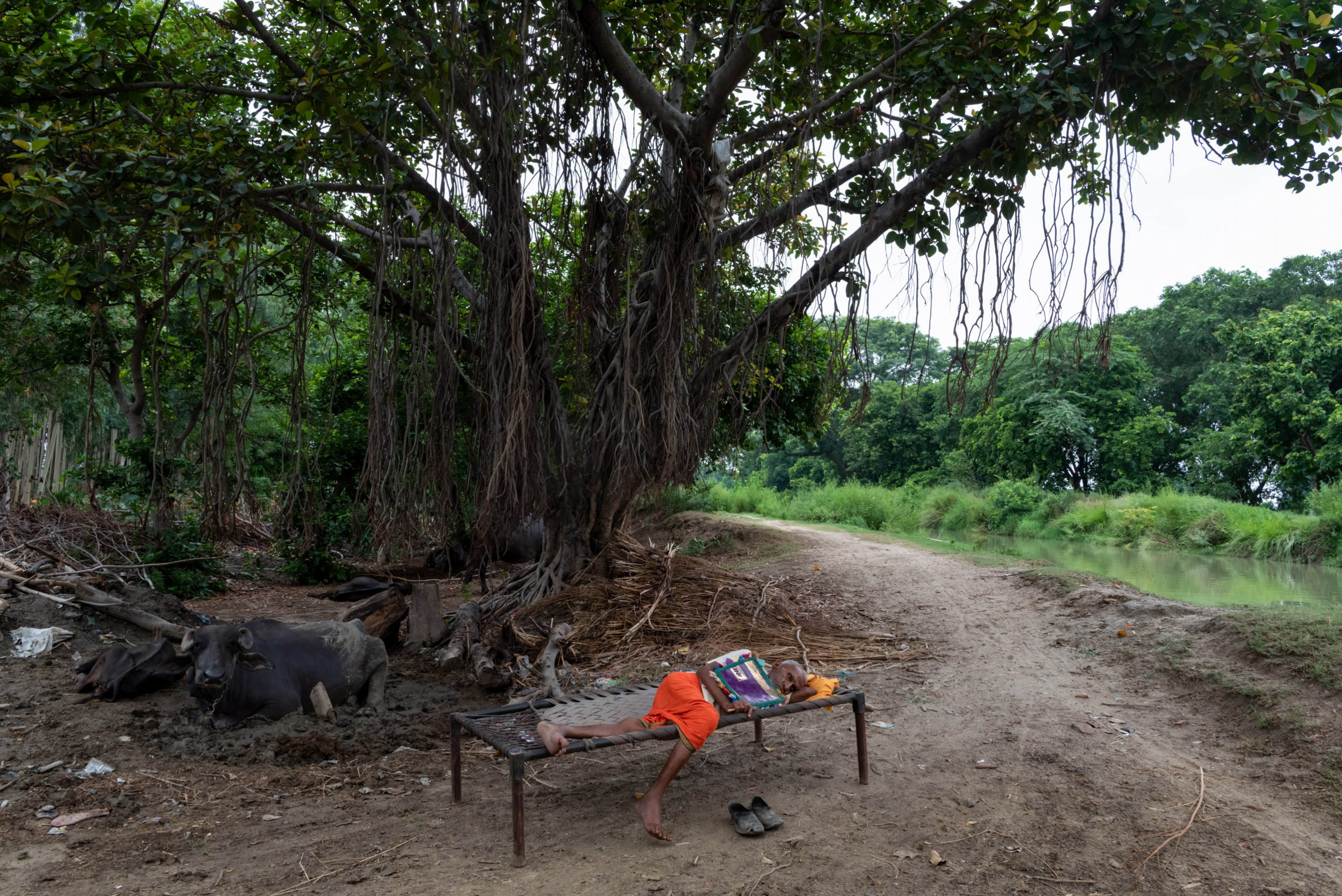 Raja Ram, 97, sleeps under a tree on a hot day.SAUMYA KHANDELWAL
Raja Ram, 97, sleeps under a tree on a hot day.SAUMYA KHANDELWAL
“People aren’t always aware of what symptoms are caused by heat. They go to a hospital as the last measure. That often causes mortality,” says Mishra.
But in Nagla Tulai, Priyanka Shakya is no longer waiting for electricity to come to the village. Her plan is to get married and leave.
